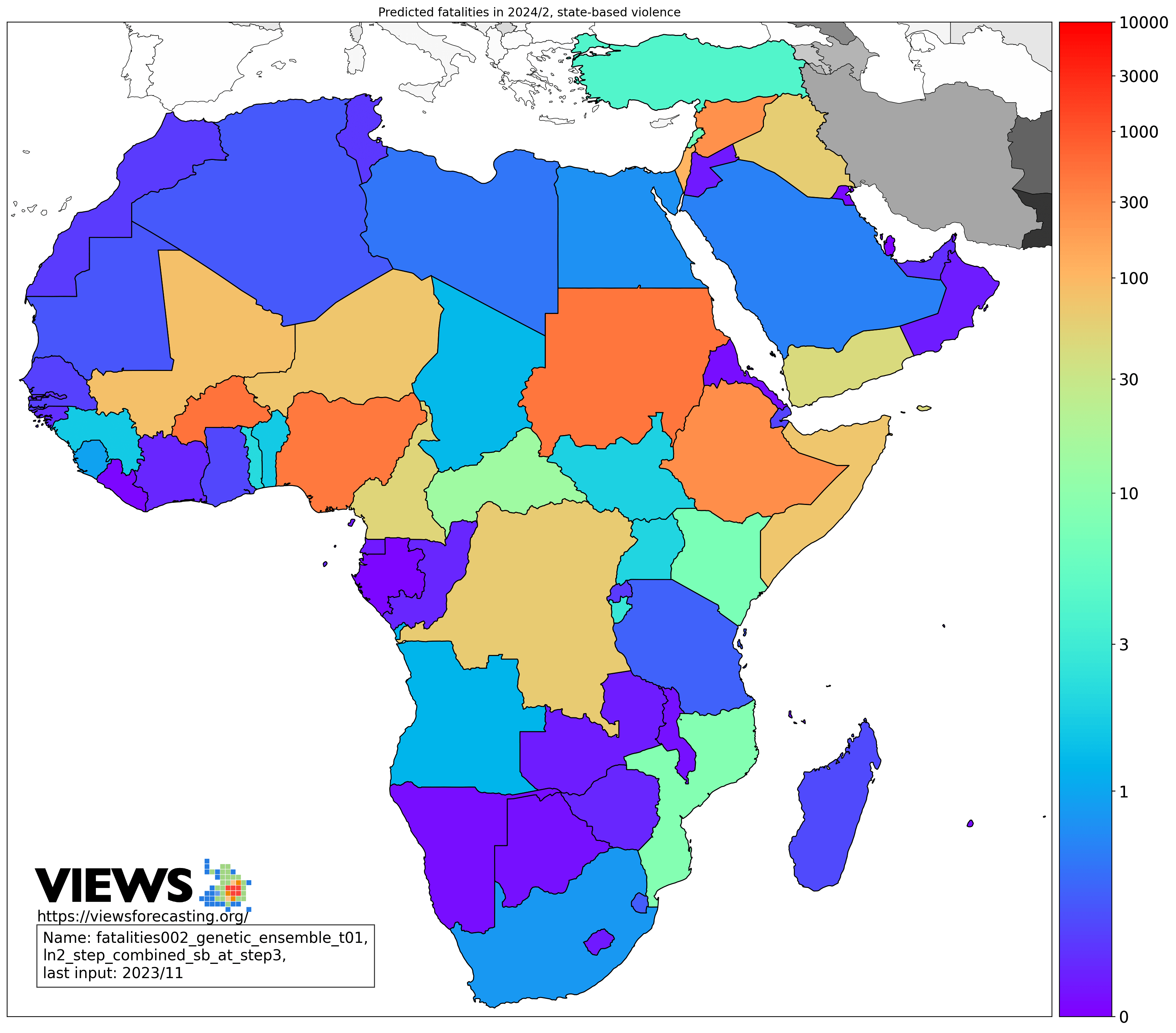The VIEWS early warning system
The Violence & Impacts Early-Warning System (VIEWS) is an award-winning conflict prediction system that generates monthly forecasts for violent conflicts across the world up to three years in advance. It is iteratively improved and expanded upon by means of the active research and development activities undertaken by the VIEWS consortium.
The current version of the VIEWS system offers predictions for state-based conflict, that is, inter- or intrastate conflicts over government or territory in which at least one of the warring parties are a
government-affiliated actor, such as military forces, police officers, or armed wings of political parties.
The prediction system is built on the rigorous VIEWS3 data infrastructure, further supported by the web-based CLI viewser that allows users to interact with the back-end database directly from the browser.
The VIEWS forecasts are offered alongside a suite of interpretation tools that model the correlation between one or more conflict indicators and their joint effect on the predicted number of fatalities in
impending conflict.
Learn more about the cornerstones of the VIEWS system on the dedicated pages below.

Example forecasts from the fatalities002 model. Predicted fatalities in February 2024, based on data up to November 2023.
The ongoing multi-year research projects
Societies at Risk,
ANTICIPATE, and
VIEWS-People in Need (VIEWS-PIN), each explore novel approaches to move from predicting conflict to also predicting the impact of armed conflict on affected societies and humanitarian outcomes. Their respective results
will be incorporated into the operational VIEWS system, allowing us to offer predictions for conflict as well as conflict impact in coming years.
In 2024, the system will also expand to offer predictions for both state-based conflict, non-state conflict (e.g. communal violence), and one-sided violence against unarmed civilians, as well as move to global coverage at both the national and sub-national levels of analysis.
The operational VIEWS model is iteratively improved and updated. To learn more about previous versions of the model and their respective data infrastructures, please consult the
model directory.





